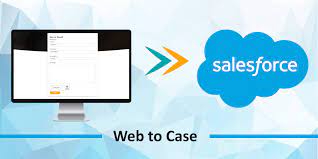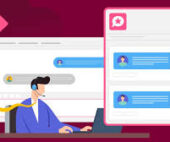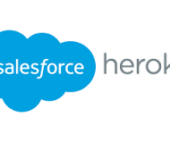The Salesforce Service Cloud Question-to-Case feature streamlines the process for moderators to create cases from questions in Chatter, facilitating the efficient tracking and resolution of customer issues. Accessible across multiple platforms, including your Salesforce org, Salesforce mobile web, Aura, and Salesforce Tabs + Visualforce sites with Chatter Questions enabled, this feature ensures a seamless experience. When a customer uses the Question action in Chatter to ask a question, similar questions and Knowledge articles appear below the Chatter publisher. If the similar questions and articles don’t address the issue, the customer posts the question. The customer who asked the questions receives an email notifying them that a case was created from their question. The email provides the case number and a link to the case. Agents can respond to the question directly from the case feed using the action in the publisher. When agents find a solution, they can respond to questions directly from the console, and the customer sees the agent’s response on the question or in the My Cases view. Agents choose whether the reply is visible to the Experience Cloud site, or only to the customer who asked the question. The Salesforce Case object forms the base of the Case Management capability of Service Cloud which helps improve the overall user experience for both customers and staff. The Salesforce Question-to-Case Connector further enhances efficiency by synchronizing questions generated in Jive with cases in the Salesforce org. This integration promotes a unified approach to managing customer inquiries. As a valuable tool in Salesforce, Question-to-Case facilitates the escalation of questions to cases, enabling agents to promptly address open issues. Community users, granted moderator permissions, also possess the ability to escalate questions to cases. Salesforce Case Management allows us to record, track and solve customer issues by sales, service and support. It includes the ability to create cases either from an email (email to case), from a web form (web to case), or manually. Cases are the backbone of Service Cloud. Cases help you track and resolve customer issues, showing you a complete view of the customer. To harness the benefits of Question-to-Case, ensure its activation in your Experience Cloud sites, Salesforce org, or both. In the broader context of case creation in Salesforce Service Cloud, cases can be initiated through various channels, such as online case logging, Case Support (CTI), and Email Support. Once a case is generated, the subsequent step involves assigning it to a sales agent or queue for efficient resolution. How do I create a case hierarchy in Salesforce? To create a case that is automatically associated with a case whose detail page you’re viewing, click the New button on the Related Cases related list. From the New dropdown button, Classic users can choose to create either a blank case or a case with information from the parent case. Like Related Posts Salesforce OEM AppExchange Expanding its reach beyond CRM, Salesforce.com has launched a new service called AppExchange OEM Edition, aimed at non-CRM service providers. Read more The Salesforce Story In Marc Benioff’s own words How did salesforce.com grow from a start up in a rented apartment into the world’s Read more Salesforce Jigsaw Salesforce.com, a prominent figure in cloud computing, has finalized a deal to acquire Jigsaw, a wiki-style business contact database, for Read more Service Cloud with AI-Driven Intelligence Salesforce Enhances Service Cloud with AI-Driven Intelligence Engine Data science and analytics are rapidly becoming standard features in enterprise applications, Read more






